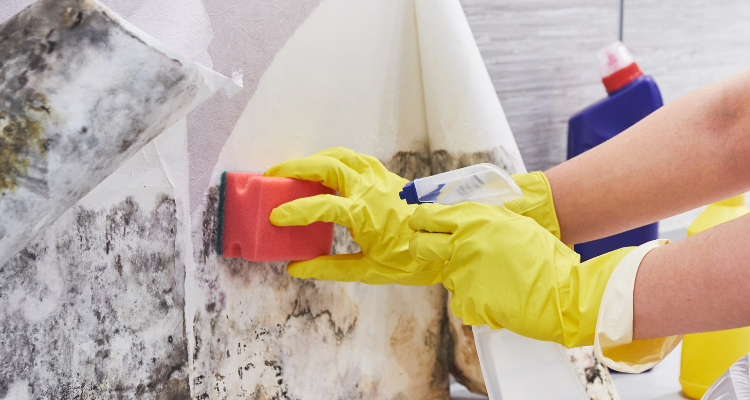- 1-905-452-8193
- Contact Us
- Member Login
- Get Listed Today
- 220,911 members

Mold isn't just an unpleasant sight; it's a serious concern that can affect your health and damage your home. It thrives in damp, dim, and warm places, silently growing where there's excess moisture in the air or on surfaces that aren't properly dried.
In this blog, we will explore some of the causes of mold growth and how to prevent and remove it.
1. Keep Surfaces Clean and Dry
Mold spores are everywhere, waiting for the right conditions to grow. Regularly cleaning surfaces removes the dust, dirt, and organic matter that mold spores need to thrive.
Use non-acidic floor cleaners to clean tiles, and other solid surfaces for effective cleaning. Focus particularly on moisture-rich zones like kitchens and bathrooms.
Equally important is ensuring that these surfaces are kept dry. Mold loves moisture, and even a small amount of water can create an ideal mold environment. Be vigilant in drying any spills or splashes immediately.
After bathing or showering, it’s advisable to dry walls and floors to eradicate surplus water. Vigilantly monitor for condensation, notably on windows and in cellars, and swiftly dry these spots to avert mold establishment.
2. Improve Ventilation and Air Circulation
Good ventilation is a powerful tool in preventing mold growth. Ensuring proper airflow can significantly reduce moisture levels, which are critical for mold proliferation.
Bathrooms, kitchens, and laundry rooms are susceptible to mold due to their high humidity levels. Installing exhaust fans in these areas can help remove moist air, replacing it with drier air from outside or other parts of the building.
In addition to mechanical ventilation, natural methods can also be effective. Open windows and doors when the weather permits fresh air to circulate and disperse moisture. For rooms without windows, consider using a dehumidifier to reduce humidity levels.
Ceiling fans and portable fans can also enhance air circulation, helping to distribute heat evenly and prevent the formation of damp spots where mold can grow.
3. Use Mold-Resistant Products
Incorporating mold-resistant products products into your home space is a proactive way to prevent mold growth. These products are specially formulated to resist moisture and inhibit mold development, providing an additional layer of protection in areas prone to mold.
For areas that are frequently exposed to water, such as showers and sinks, consider using mold-resistant sealants. These sealants create a waterproof barrier, preventing water from seeping into cracks and crevices where mold can grow.
In addition to sealants, mold-resistant cleaning products are also available. These cleaners remove existing mold and leave behind a protective layer that helps prevent future growth. Regularly using these products in high-moisture areas can help keep mold at bay.
4. Monitor Humidity Levels
When the air is saturated with moisture, it creates the perfect breeding ground for mold to proliferate on various surfaces.
One effective way to manage humidity is by using dehumidifiers. These devices remove excess moisture from the air, helping to maintain a balanced indoor climate. Place dehumidifiers in areas that are prone to high humidity, such as basements, laundry rooms, and bathrooms.
In addition to cooling the air, air conditioners help remove moisture, further reducing the likelihood of mold growth. Ensure that your air conditioning system is properly maintained and that the filters are clean to maximize its efficiency in humidity control.
5. Address Water Leaks and Moisture Problems Promptly
Water leaks and unresolved moisture issues are like open invitations for mold to enter and flourish in your home or commercial space. Even a small, slow leak can create a persistently damp environment, providing the perfect conditions for mold to grow and spread.
Regularly inspect your property for signs of leaks, such as water stains on ceilings or walls, musty odors, or visible drips. Pay close attention to areas around pipes, faucets, and appliances like washing machines and dishwashers.
If you find a leak, act quickly to repair it. You may be able to fix minor leaks yourself with the appropriate tools and materials. However, it's advisable to seek professional help for more significant issues.
In addition to fixing leaks, addressing the root causes of moisture problems is essential. For example, if you have condensation on windows, improve ventilation in the room. If your basement is prone to flooding, consider installing a sump pump or improving drainage around your property.
Professional Help
There are situations when DIY mold prevention and removal efforts might not be sufficient. In cases of extensive mold infestation, health concerns, or if the mold is located in hard-to-reach areas, seeking professional mold removal services is advisable.
Professionals in mold remediation possess the necessary expertise, equipment, and protective gear to safely and effectively remove mold from your property. They can also identify the source of the mold and provide solutions to prevent its recurrence.
When choosing a mold remediation service, look for one with a solid reputation, proper certifications, and positive reviews from previous clients. It's important to get quotes from multiple services and inquire about their process, the chemicals they use, and any guarantees they offer.
Once you've selected a service, you can expect them to conduct a thorough inspection of your property, identify all areas affected by mold, and develop a plan for removal and prevention. The remediation process typically involves containment of the affected area, removal of mold-infested materials, cleaning and disinfecting, and measures to prevent future mold growth.
By enlisting the help of a reputable professional mold remediation service, you can ensure that the mold is removed safely and effectively, protecting the health of your family or employees and the integrity of your property.
